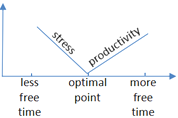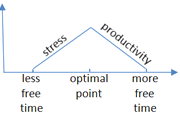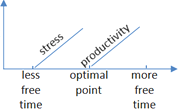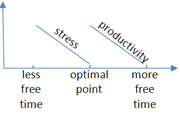-



Yellowstone National Park is the flagship of the National Park Service and a favorite to millions of visitors each year. The park is a major destination for all members of the family. By driving the grand loop road, visitors can view the park from the comfort of their vehicle and also take a rest at one of the many roadside picnic areas.
How much is the entrance fee?
$25 - Private, noncommercial vehicle;
$20 - Motorcycle or snowmobile (winter)
$12 - Visitors 16 and older entering by foot, bike, ski, etc.
This fee provides the visitor with a 7-day entrance permit for both Yellowstone and Grand Teton National Parks.
A $50 park annual pass provides entrance for a single private non-commercial vehicle at Yellowstone and Grand Teton National Parks. The $10 Interagency Senior Pass (62 and older) is a lifetime pass available to U.S. citizens or permanent residents.
Where can you stay?
Inside Yellowstone, you can choose to stay in modern or historic hotels and cabins inside the park like the Old Faithful Inn, the world’s largest log structure. For those who want to be a little closer to nature, there are 12 campgrounds with a range of services from primitive pit toilets to shower and laundry facilities. There’ s also RV camping with and without dumping stations.
Staying outside the park gives you unique Old West experiences but still keeps you close to park attractions.
If you’re taking a road trip to Yellowstone, you’ll want to check out our Hotels and Cabins On The Road section.
1.The entrance fees listed on the web page don’t apply to _______.
A. temporary residents in the USA
B. visitors out of a certain age range
C. vehicles involving business activities
D. private motorcycles and snowmobiles
2.What are you likely to acquire in the Old Faithful Inn?
A. Unique old west experiences.
B. Primitive pit toilets and shower.
C. Knowledge of origin of the park.
D. RV camping with dumping sites.
难度: 中等查看答案及解析
-
Imagine trying to test the memory of the blue whale—the biggest animal that exists or has ever existed, a 190-ton behemoth that dwarfs (使相形见绌) even the largest dinosaur, a leviathan that is rarely seen except when it comes up for air. How would you subject such a creature to a psychological test?
You can’t, exactly. But there is another way to get a sense of how their minds work. For years, scientists have been fitting radio tags to these giants to track their whereabouts (下落). By analyzing a decade’s worth of that data, Briana Abrahms from the National Oceanic and Atmospheric Administration has shown that these animals fine-tune the paths of their migrations to track the historical abundances of krill—the tiny crustaceans that they eat. Rather than finding where their prey (捕获物) currently is, they go after the places where their prey was in years past. Their migrations, in other words, are guided by memory. So what happens in a world where memory might lead them away from the right path?
Countless species of animals migrate over long distances to exploit far-flung sources of food, but these voyages aren’t just about getting to the final destination. The journey itself can be a sort of food tour, too. Migrating animals often adjust the pace and timing of their movements to hit pulses of seasonal food that spring up along their path. The ecologist Sandra van der Graaf described this as “surfing the green wave” after first observing it among barnacle geese. Others have found the same pattern among wasps, elk, mule deer, and brown bears.”
The blue whales of the North Pacific spend their winters in their breeding grounds off California and Costa Rica. Come spring, they swim up the coast of North America toward the food-rich summer waters of the Pacific Northwest. They could make the journey in two months (and they do, on the reverse trip back south). Instead, they take twice that time, pausing to gorge (狼吞虎咽) themselves on blooms of krill that appear along the way. It’s a leisurely season-long tour of a continent-wide buffet line.
Scientists can get a good sense of this changing buffet by measuring the concentrations of chlorophyll in different patches of ocean. This green pigment (色素) reflects the amount of plankton, which in turn is eaten by krill. The more chlorophyll there is, the more food a blue whale might find.
By comparing chlorophyll counts to whale movements, Abrahms and her team expected to see that “they follow the timing of their prey, as it becomes available,” she says. But they were surprised to learn that the animals very rarely tracked contemporary waves of krill. Instead, their movements were strongly correlated (相关联) with 10-year historical averages of chlorophyll. Put it this way: You could predict a blue whale’s movements with far more accuracy by looking at where their food has been than where their food currently is.
1.How are the scientists carrying out a psychological test on the blue whales?
A. They wait for the blue whales to approach the sea surface.
B. They induce the blue whales to accept the memory test.
C. They count on a tracking technique to accumulate data.
D. They compare the blue whales with the large dinosaurs.
2.What might migrating animals do if they are misguided by memory?
A. They might try their best to get to the final destination.
B. They might fall back on the seasonal food along the way.
C. They might accelerate the pace to cover longer distances.
D. They might surf the ocean wave to save time and energy.
3.What does the continent-wide buffet line in Paragraph 4 indicate?
A. The breeding grounds of the blue whales are lacking in food.
B. Chlorophyll can be defined as the beginning of the food chain.
C. Contemporary waves of krill can reflect whale movements.
D. The season change determines the hunting route of the whales.
难度: 困难查看答案及解析
-
Up and down the economic ladder, many Americans who work—and especially those raising kids—are pressed for time, wishing they had more of it to devote to leisure activities (or even just sleeping). At the same time, research has indicated that people who are busy tend to be happier than those who are idle, whether their busyness is purposeful or not.
A research paper released late last year investigated this trade-off, attempting to pinpoint (精确指出) how much leisure time is best. Its authors examined the relationship between the amount of “discretionary time” people had—basically, how much time people spend awake and doing what they want—and how pleased they were with their lives.
The paper, which analyzed data covering about 35,000 Americans, found that employed people’s ratings of their satisfaction with life peaked when they had in the neighborhood of two and a half hours of free time a day. For people who didn’t work, the optimal (最佳) amount was four hours and 45 minutes.
The research traced a correlation (关联) between free time and life satisfaction, but didn’t provide any definitive (最后的) insight into what underlies that correlation—“which is exciting, because this is a work in progress,” says Cassie Mogilner Holmes, a professor at UCLA’s Anderson School of Management and a co-author of the paper, which hasn’t yet been peer-reviewed or published in an academic journal.
An experiment that the researchers arranged hinted at (暗示) a possible explanation of the correlation they found. They asked participants to picture and describe what it would be like to have a certain amount of daily free time, and then report how they’d feel about that allotment (分配). “What we find is that having too little time makes people feel stressed, and maybe that’s obvious,” says Holmes. “But interestingly, that effect goes away—the role of stress goes away—once you approach the optimal point.” After that point, Holmes says, the subjects started to say they felt less productive overall, which could explain why having a lot of free time can feel like having too much free time.
It’s not clear what an individual is to do with these findings, since the amount of free time people have usually has something to do with a variety of factors, such as having children or a degree of control over work schedules. Holmes shared her research with the MBA students in her class on happiness, and some of the most time-crunched among them were comforted by the findings: “I think that two and a half hours creates a nice goal that even if you increase a little bit more of your discretionary time use, you can expect that it will translate into greater life satisfaction.”
1.According to the passage, what happens to Americans occupied with their work?
A. They allow themselves more leisure time.
B. They keep themselves busy on purpose.
C. They know how much leisure time is best.
D. They experience higher level of satisfaction.
2.What can be learned about the correlation between free time and life satisfaction?
A. Researchers have cast light on the cause of the correlation.
B. Unemployed people need more leisure time to feel content.
C. The paper on the correlation has achieved peer recognition.
D. Employed people enjoy more leisure time in the neighborhood.
3.Which of the following charts illustrates the change of stress and productivity?
A.
 B.
B. 
C.
 D.
D. 
4.It can be inferred from the last paragraph that _______.
A. Holmes is optimistic about the influence of her findings
B. individuals are encouraged to control their work schedules
C. people with tight schedules can’t benefit from the findings
D. the MBA students find no free time to obtain life satisfaction
难度: 困难查看答案及解析
-
The Boy Who Harnessed (利用) the Wind is an inspirational true-story film based on a memoir—an account of the author’s personal experiences—by the Malawian engineer William Kamkwamba. As a teenager, Kamkwamba built a wind turbine for his famine-stricken town in Malawi, helping to power small appliances and eventually irrigate crops. But though the film points toward that technological breakthrough, it spends much of its running time depicting (描绘) its hero’s community and avoids many of the damaging language that tend to accompany pop-cultural description of poverty or conflicts in African countries.
This approach is what makes the movie, much more attractive than other such docu-dramas. Chiwetel Ejiofor, an English actor, is making his feature appearance as a writer and director to draw attention to Kamkwamba’s story—but he’s just as focused on depicting the boy’s family life and the dangers of farming in early-2000s Malawi. Famine isn’t just a thing that happens to the Kamkwambas. It’s the result of a series of unpredictable catastrophes that trickle down to this small village and leave its people struggling to grow and sell food. By examining the many structural reasons for the town’s crisis, Ejiofor makes Kamkwamba’s achievement feel better-earned from a narrative (叙述的) perspective.
The Kamkwambas are not lacking in food, at first, though they do live harvest to harvest. Soon, a series of dramatic floods, combined with government unrest (动荡), begins to take a toll on (have a bad effect on) their life. Through it all, William shows his gift for invention, taking apart whatever machines he can get his hands on and figuring out how they work. In one crucial (and cleverly written) scene, some local teenagers beg William to fix their radio so that they can listen to a soccer game, and he does, making use of a battery from several drained power cells. As the radio jolts to life, it delivers a news report of planes hitting buildings in the U.S., which serves as the first real acknowledgment of the film’s exact time period. The uninterested teens immediately switch over to the game, but Ejiofor included that detail for a reason. Though Malawi is on the other side of the world from the U.S., and the Kamkwambas’ village is far from the country’s biggest city, the negative effects of 9/11 are felt even there—unsettling the government and setting off a chain reaction that quickly turns things terrible. Moments like these affirm Ejiofor’s particular skill for storytelling. To William and his young friends, the event barely registers, but it still has huge consequences for their lives.
The latter half of the film is tougher going than the light, community-oriented opening, but it’s anchored by strong performances. Trywell, William’s father, isn’t a bad dad, but as his family gets hungrier, his anger toward his government, which was supposed to help him thrive, rises to the surface. As William’s mother, Maïga is a calmer, steadier figure, but her pride is damaged, too. She speaks of never wanting to be the stereotypical (老套的) family “praying for rain,” as her ancestors did, and despairs as Trywell’s strategy to save the farm becomes almost exactly that.
At a certain point, I started mentally checking my watch—Isn’t it time for the boy to start harnessing the wind? But Ejiofor doesn’t want William’s massive achievement to look easy. Not only does William need to gather the practical materials needed for a windmill in a nearly abandoned town, but he also has to challenge his father’s skepticism and persuade him to give up the few possessions he still has, including a bicycle, to create something that appears impossible. It’s striking, and deeply sad, to consider that superficially (表面上) the only thing keeping William’s town from starvation was basically wind power. In Ejiofor’s hands, The Boy Who Harnessed the Wind builds realism and context into both sides of that story and manages to be a winning adaptation as a result.
1.In the film The Boy Who Harnessed the Wind, a considerable part is about _______.
A. the miserable life in Malawi B. the irrigation of the crops
C. the building of the turbine D. the technology breakthrough
2.How does Ejiofor make Kamkwamba’s achievement more noticeable?
A. By shooting the film in the form of story-telling.
B. By analyzing the reasons for the village’s poverty.
C. By listing unpredictable catastrophes attacking the village.
D. By strengthening the difficulty in growing and selling the food.
3.What is the purpose of the scene about the radio in Paragraph 3?
A. To report the terror event in the US B. To reveal the setting of the film.
C. To stress the teens’ interest in games. D. To show the hero’s willingness of help.
4.The underlined word “that” in Paragraph 4 refers to _______.
A. Maïga’s pride B. Trywell’s anger
C. the family praying for rain D. the despair of saving the farm
5.The scene of William harnessing the wind appears quite late in the film so as to _______.
A. build realism and context into both sides of the story
B. underline the local people’s suffering from starvation
C. show his father’s skepticism and reluctance to help him
D. impress on viewers the difficulty of making the machine
6.What would be the best title for this passage?
A. A Wind Turbine Invented by a Malawian Engineer
B. An Inspirational True-story Adapted into a Film
C. The Kamkwamba Family and Their Life in Malawi
D. A True Winner—The Boy Who Harnessed the Wind
难度: 困难查看答案及解析
